Technical Notes
To keep up to date with a wide range of technical issues, DCT publishes a series of technical notes and documents to address current issues to help you answering the questions we are getting asked the most.
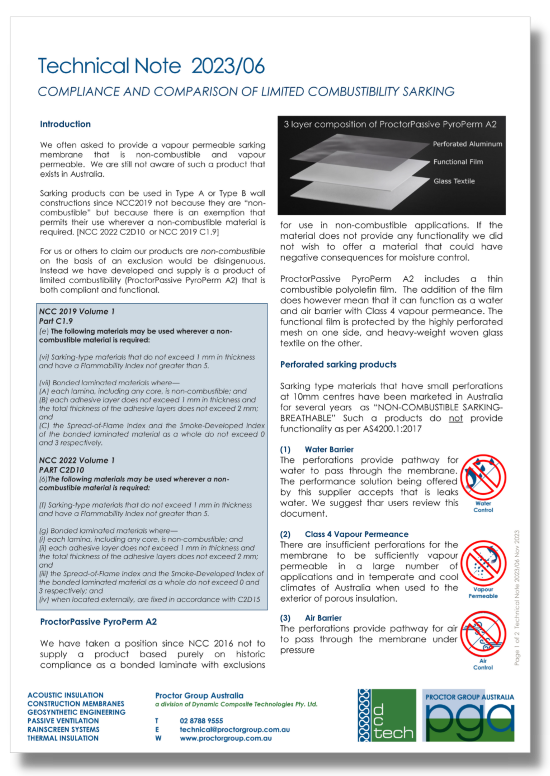
Compliance & Comparison of Limited Combustability Sarking
We often asked to provide a vapour permeable sarking membrane that is non-combustible and vapour permeable. We are still not aware of such a product that exists in Australia.
Sarking products can be used in Type A or Type B wall constructions since NCC2019 not because they are “non-combustible” but because there is an exemption that permits their use wherever a non-combustible material is required. [NCC 2022 C2D10 or NCC 2019 C1.9]
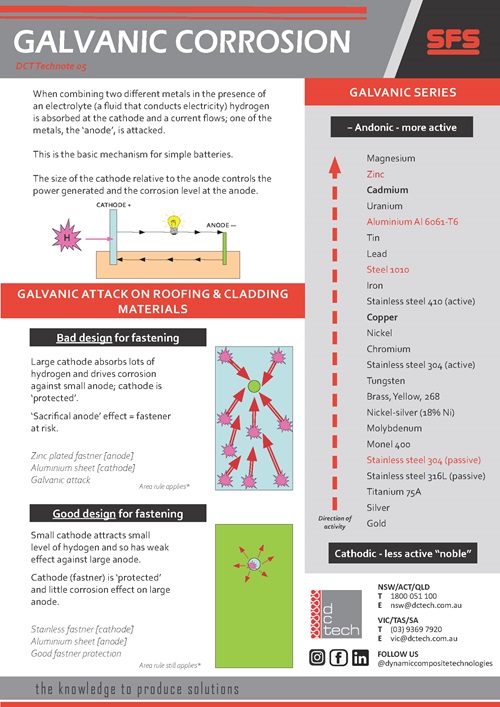
Galvanic Corrosion
Galvanic Corrosion is a process of when two different metals of equal surface area are combined in the presence of an electrolyte (a fluid that conducts electricity). Hydrogen is absorbed at the cathode and a current flows, thus the less noble metal migrates into the solution (the ‘anode’ is attacked).

The Wall of Death
One of the most common enquiries we get asked is how to effectively insulate a single skin masonry wall or how to rectify one that has moisture or sinister odours emerging from behind the plasterboard lining. Since NCC 2016 Amendment 1 clarified the requirement for all elements of type A and type B wall construction to be non-combustible, including the insulation, we are seeing more drawings of what we have dubbed the “WALL OF DEATH.”
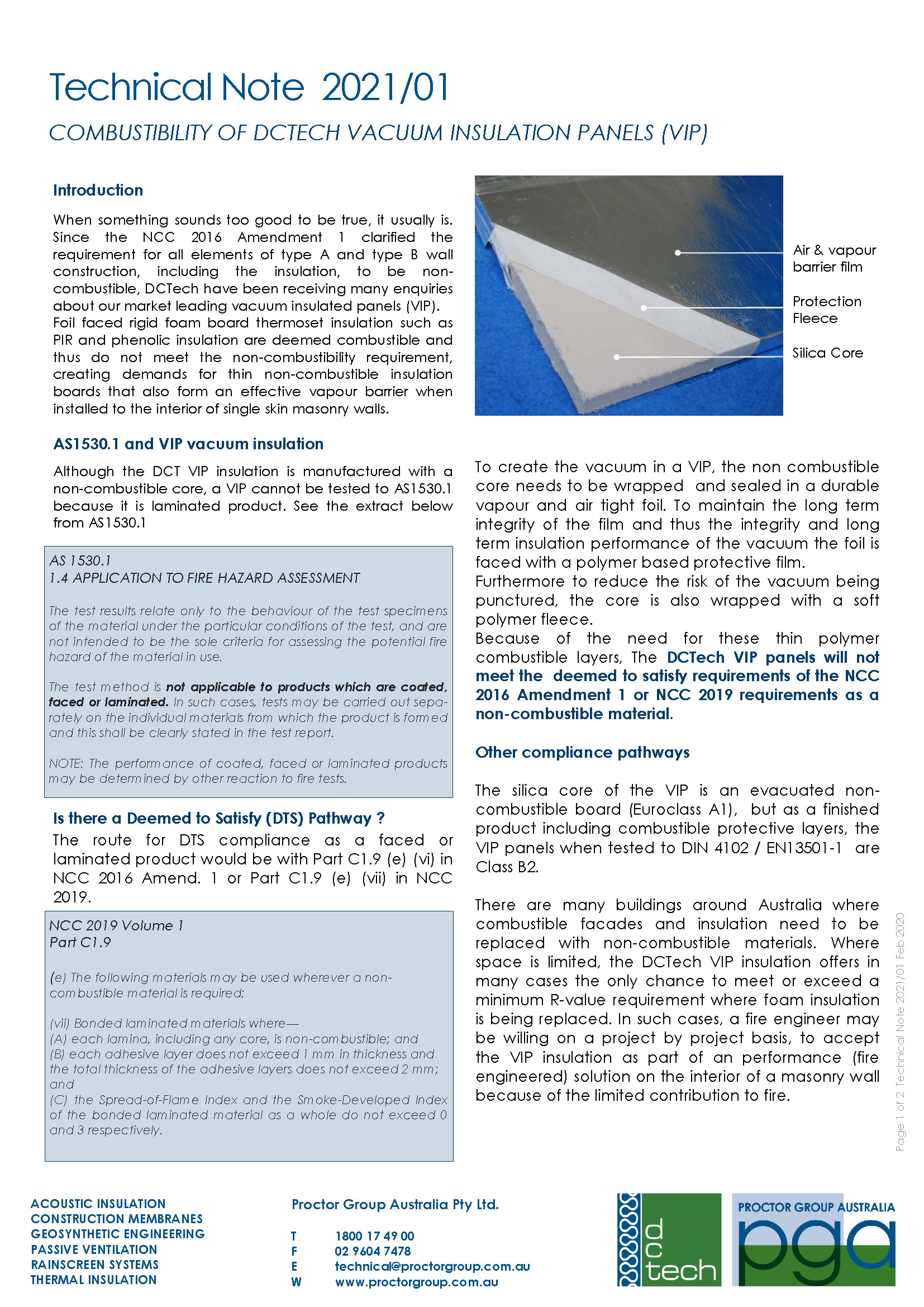
Combustibility of DCTech Vacuum Insulated Panels (VIP)
When something sounds too good to be true, it usually is. Since the NCC 2016 Amendment 1 clarified the requirement for all elements of type A and type B wall construction, including the insulation, to be non-combustible, DCTech have been receiving many enquiries about our market leading vacuum insulated panels (VIP).
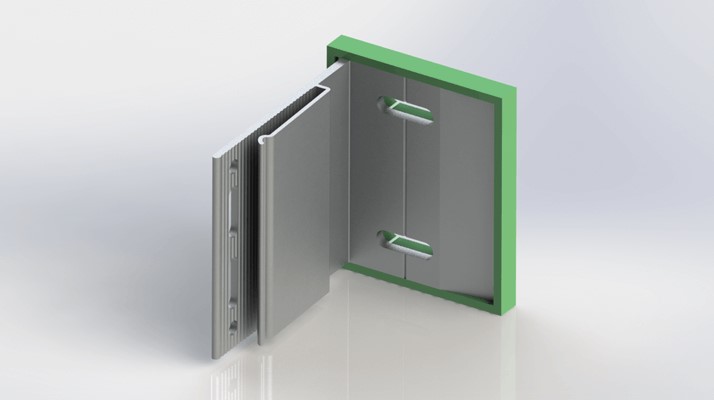
Thermal Isolator & Section J0.5 Requirements
This technical note provides details of the Nvelope framing system, the Nvelope Thermal Gasket, its R-value and its relevance to the NCC 2019 Section J.
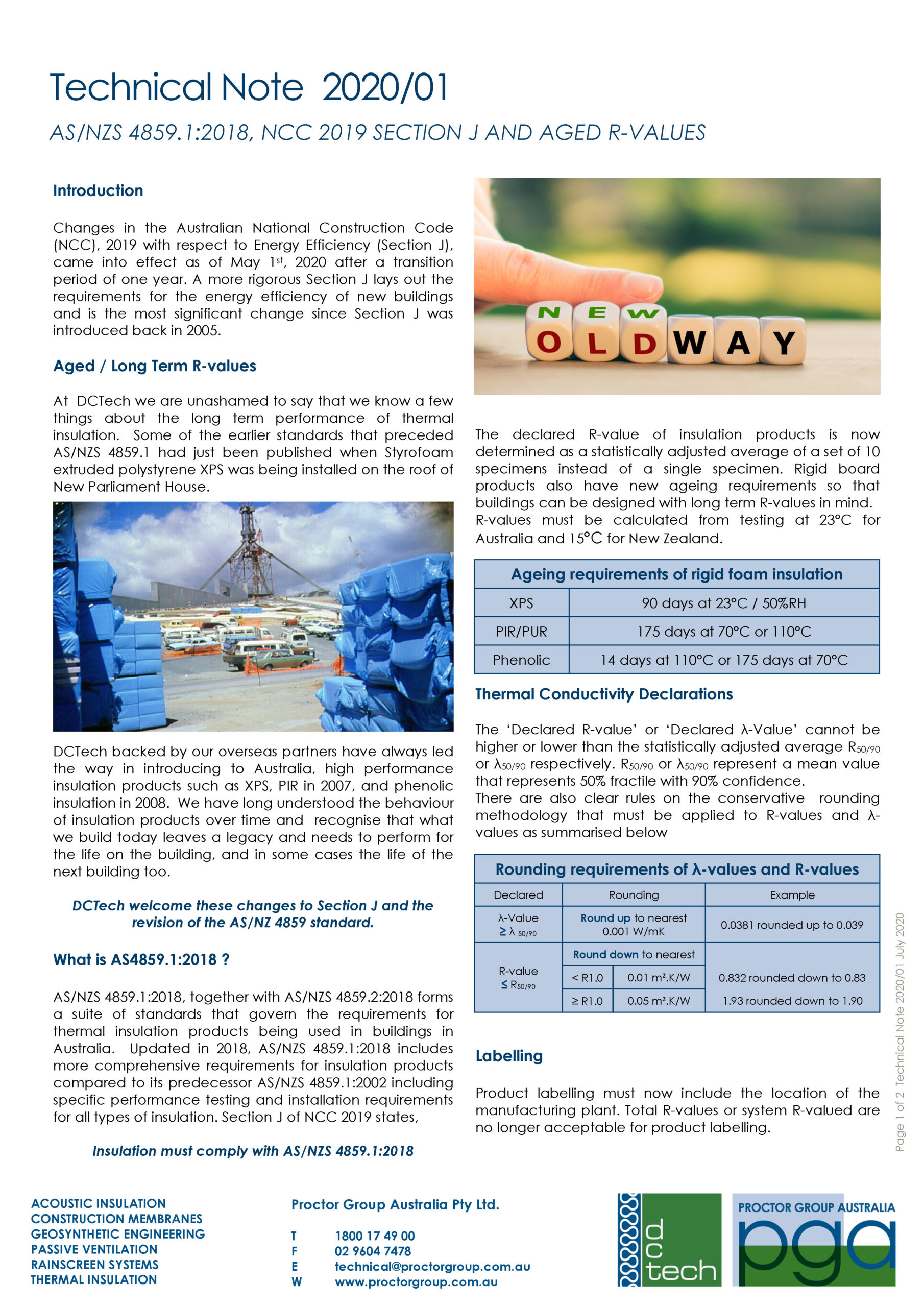
Aged R-Values
Changes in the Australian National Construction Code (NCC), 2019 with respect to Energy Efficiency (Section J), came into effect as of May 1st, 2020 after a transition period of one year. A more rigorous Section J lays out the requirements for the energy efficiency of new buildings and is the most significant change since Section J was introduced back in 2005.
CPD
DCTech offer a comprehensive programme of CPD’s, seminars, webinars and in-house presentations that provide a valuable opportunity to expand your knowledge and understanding of Australian building standards and practices, along with showcasing the latest innovations and developments in building materials.
